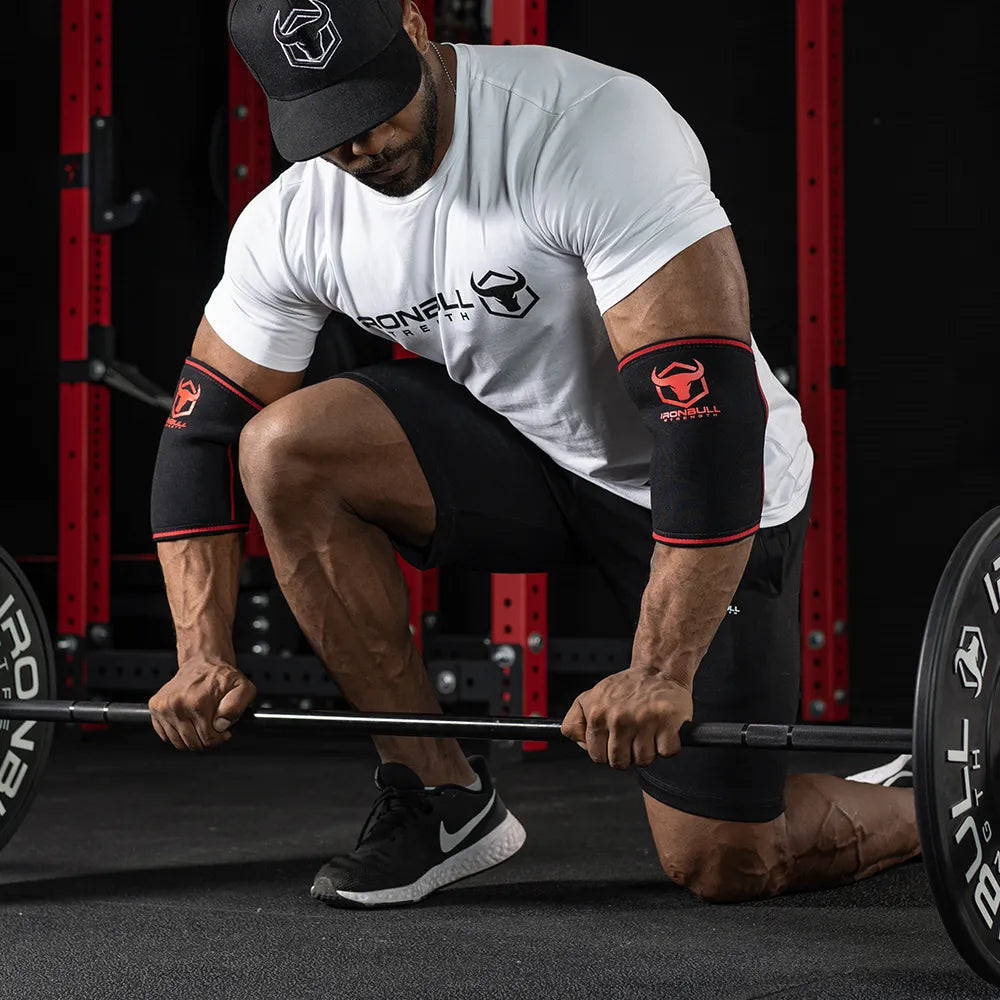Tirages en rack : avantages, muscles sollicités et comment les maîtriser


Que sont les tirages de rack ?
Les tirages en rack sont comme le cousin rebelle du soulevé de terre. Ils démarrent en position surélevée sur un rack , ce qui en fait un soulevé de terre partiel. Cette modification cible les muscles de la chaîne postérieure tout en réduisant la tension par rapport au soulevé de terre complet.
Si vous vous concentrez sur la partie supérieure du soulevé de terre, les tirages au rack sont la solution idéale. Ils sont particulièrement utiles aux haltérophiles qui souhaitent se concentrer sur cette partie spécifique du mouvement.
Équipez votre rack d'un jeu de plaques de protection . Le sol profitera encore plus de votre entraînement !
Muscles sollicités lors des tirages en rack
Les tirages sur rack sollicitent efficacement le bas du corps. Ils ciblent principalement les fessiers, les ischio-jambiers, les quadriceps et les mollets. Cela représente une forte sollicitation musculaire en un seul mouvement.
Vos muscles du dos sont également sollicités. Le bas du dos (érecteurs du rachis) et le haut du dos (trapèzes, grands dorsaux) sont tous deux sollicités pendant le mouvement.
Et n'oublions pas la force de préhension et des avant-bras. Tenir la barre fait des merveilles pour les muscles des avant-bras et la prise en main en général.
Une barre est essentielle pour les tirages en rack. C'est la clé pour cibler efficacement ces groupes musculaires.
Avantages de l'intégration de poignées de rack
Les tractions en rack sont idéales pour améliorer la force de traction. Les muscles ainsi renforcés sont les mêmes que ceux que vous utilisez pour soulever des charges lourdes au quotidien, et pas seulement lors des soulevés de terre.
Votre force de préhension est également renforcée. Tenir la barre pendant les exercices développe à la fois l'endurance et la force de votre prise.
Vous stagnez ? Les tractions sur rack peuvent vous aider à les surmonter en vous concentrant sur la partie la plus lourde de l'exercice.
De plus, ils sont plus faciles à utiliser pour le bas du dos que les soulevés de terre complets, ce qui en fait une option plus sûre pour les personnes souffrant de problèmes de dos.
Pensez à ajouter des genouillères pour un soutien supplémentaire des articulations lors de tirages lourds sur rack.
Guide étape par étape pour une forme de tirage de rack appropriée
Tout d'abord, placez le support de manière à ce que la barre soit juste en dessous de la hauteur des genoux. C'est là que la magie opère.
Saisissez la barre en pronation. Vos pieds doivent être à la largeur des épaules et votre dos doit être droit.
Pour soulever la barre, poussez sur vos talons. Gardez la barre près de votre corps et soulevez-la jusqu'à vous tenir debout.
En haut, serrez vos fessiers, maintenez la position pendant quelques secondes, puis abaissez lentement la barre.
Un banc de musculation robuste peut vous aider à ajouter de la variété à votre entraînement si vous souhaitez intégrer une partie du haut du corps.
Erreurs courantes à éviter lors du tirage de rack
Ne commencez pas avec trop de poids. Commencez léger pour éviter les blessures et augmentez progressivement le poids au fur et à mesure que vous maîtrisez la posture.
Évitez de courber le dos. Maintenez une colonne vertébrale neutre pour prévenir les blessures au dos.
Vérifiez la hauteur du rack. La barre doit être positionnée juste en dessous du genou pour une amplitude de mouvement optimale.
Contrôlez la levée. Ne faites pas rebondir la barre ; soulevez-la et abaissez-la régulièrement.
Les sangles de levage peuvent vous aider à maintenir votre adhérence sur les charges plus lourdes, évitant ainsi une fatigue prématurée de la prise.
Maîtrisez les tractions du rack pour des gains maximums
Les tractions en rack sont un outil puissant pour renforcer le bas du corps et le haut du dos. De plus, elles sont idéales pour améliorer la préhension.
Si vous cherchez à dépasser vos limites de force, les tirages en rack sont parfaits. Ils offrent également une alternative plus sûre aux soulevés de terre complets.
Envisagez d'améliorer votre salle de sport à domicile avec un rack de musculation . C'est l'équipement idéal pour réaliser des tractions sûres et efficaces.

